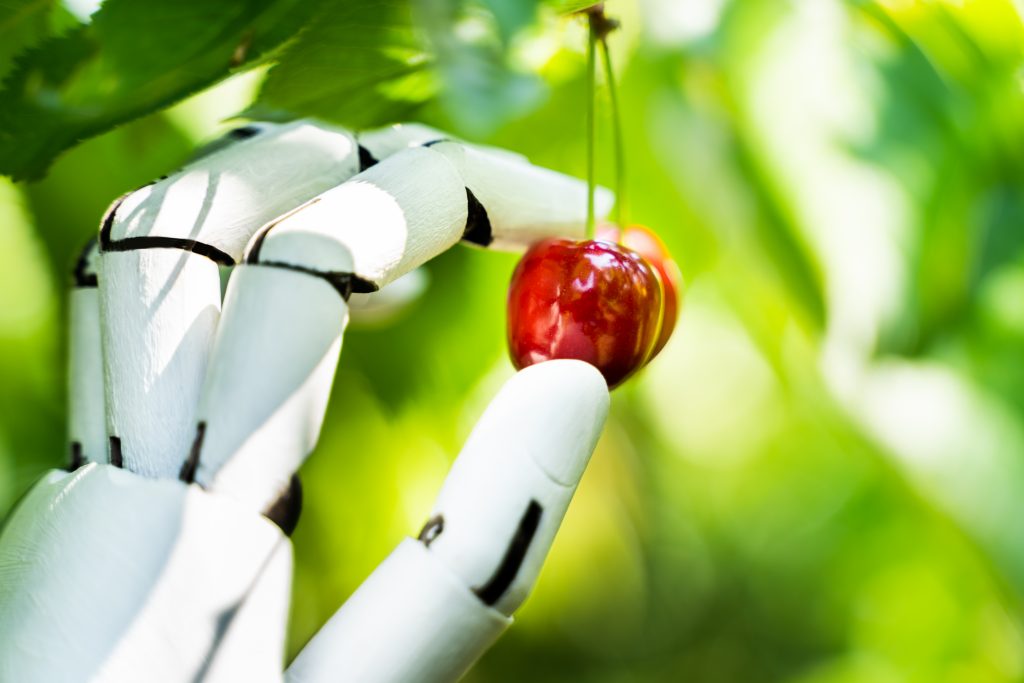SMART FARMING
By 2050, the UN predicts that there will be 9.7 billion people on earth, resulting in a 69% increase in global agricultural production.
Farmers and agricultural businesses are turning to the Internet of Things for analytics and increased production capacities to satisfy the growing demand.
Do you have a job in the tech sector? Utilize data-driven research to gain business insights about your competitors, market trends, and the newest breakthroughs. In the coming decades, the farming sector will be more significant than ever.
By 2050, the UN predicts that there will be 9.7 billion people on the planet, resulting in a 69% increase in global agricultural production. Farmers and agricultural businesses are turning to the Internet of Things for analytics and increased production capacities to satisfy this need.
One of the most well-known manufacturers of farming equipment, John Deere, has started to connect its tractors to the Internet and has developed a way to show information about farmers’ crop yields. The business is leading the development of self-driving tractors, which would free farmers to do other duties and boost productivity even more.
Precision farming, also known as precision agriculture, is the practice of using satellite imagery and other technology (such as sensors) to observe and record data with the aim of improving production output while minimizing cost and protecting resources. All of these methods contribute to precision farming.
Ingenious Greenhouses
Smart greenhouses use the Internet of Things (IoT) and connected devices to build a self-regulating microclimate that is favorable for agricultural growth. These controlled surroundings remove the challenges posed by bad weather and predators while providing farmers with real-time information for maximum effectiveness.
Farmers may control crop spraying, irrigation, lighting, temperature, humidity, and other factors by employing smart greenhouse crop monitoring systems that take advantage of insights from big data and analytics.
IoT, agricultural sensors, and farming drones are the future of agriculture.
Although precision farming and smart agriculture are gaining popularity, they may only represent the beginning of an even greater usage of technology in agriculture.
The IoT is embracing the development of blockchain technology, which might be significant for the farming industry given its capacity to give businesses vital information about crops. Farmers can collect information about crops using sensors. This information is recorded onto a blockchain and includes distinguishing characteristics as well as salt, sugar, and pH levels.
By 2023, according to Insider Intelligence, there will be close to 12 million installed agricultural sensors worldwide. Furthermore, according to tech giant IBM, a typical farm may produce 500,000 data points every day, which will help farmers boost yields and earnings.
Farming technology innovation is nothing new. Prior to the Industrial Revolution, handheld instruments were the norm. The cotton gin was later introduced. Grain elevators, chemical fertilizers, and the first gas-powered tractor were all inventions of the 1800s. The use of satellites by farmers to organize their work begins in the late 1900s.
The Internet of Things is going to advance farming’s future. Farmers are already adopting smart agriculture more frequently, and high-tech farms are swiftly taking over as the norm thanks to agricultural drones and sensors.
We’ve highlighted IoT uses in agriculture below, along with how “Internet of Things farming” may assist farmers in meeting future food needs.
Precision farming and smart agriculture in high tech farming
To increase the effectiveness of their daily job, farmers have already started utilizing a number of high tech agricultural techniques and technologies. Farmers can acquire precise maps of the topography, available resources, and other factors like soil temperature and acidity, for instance, by installing sensors in fields. In order to forecast weather patterns for the upcoming days and weeks, they can also use climate forecasts.
Farmers may get statistics on their livestock feeding and output using their smartphones to remotely monitor their equipment, crops, and livestock. They are even able to make statistical forecasts for their cattle and crops using this technique.
Additionally, drones have evolved into a crucial tool for farmers to inspect their properties, conduct field research, and produce real-time data.
It makes sense that farmers are increasingly looking to agricultural drones and satellites for the future of farming given all the potential advantages of these IoT applications in agriculture.
Farmers can use drones to track how far along their crops are in each of their growth cycles. In addition, growers can use drones to spray sick crops with chemicals to revive them. According to DroneFly, drones can apply fertilizer 40–60 times more quickly than humans can. In order to enhance operational efficiency and reduce labor expenses, agriculture’s big data will be collected and analyzed in the future. However, there are many more IoT trends to comprehend, and this technology will affect a lot more sectors than just agriculture.

